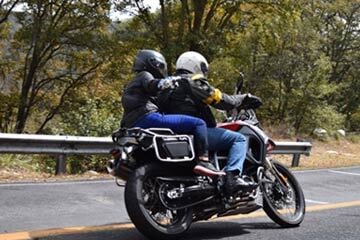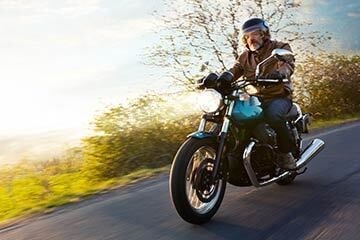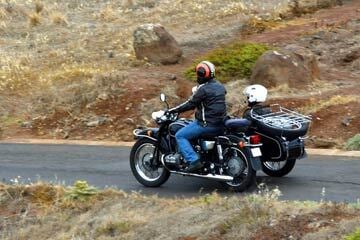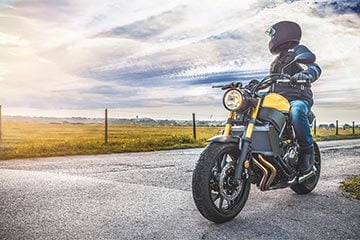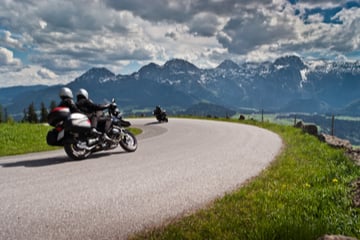What affects the price of motorbike insurance?
Factors that affect the cost of your insurance include:
- Your age
- Where you live
- Your riding history
- The size of your motorbike's engine
- The value of your motorbike
- Your age. If you're an older, more experienced rider, you can expect to pay less than a younger, less experienced rider.
- Where you live. If your area has a high crime rate, you might pay more for your insurance. This is because insurers view your area as one with a higher risk of making a claim.
- Your riding history. The more penalty points you have on your license, the more you can expect to pay for your insurance.
- The size of your motorbike's engine. How powerful a motorbike is determines what insurance group it's placed in. These groups are ranked 1 - 17 or sometimes 22, and determine how much you pay for your insurance.
- The value of your motorbike. The more expensive the motorbike, the more it costs to repair or replace. Insurers take this into account when calculating how much your insurance costs.
How can I save on my Honda motorbike insurance?
Here are a few tips on how to save some money:
- Shop around
- Avoid modifications
- Cut extras and add-ons
- Improve your motorbike security
- Increase your voluntary excess
- Pay annually
- Shop around. By shopping around and comparing quotes from different providers, you could find a good deal and save yourself some money.
- Avoid modifications. Modifying your motorbike is usually seen as a risk by insurers. They could increase the cost of your insurance as a result.
- Cut extras and add-ons. By only paying for what you need, you could lower your costs.
- Increase your motorbike security. Storing your motorbike in a locked shed or garage shows insurers you're taking good care of your ride.
- Increase your voluntary excess. By increasing your excess, you're showing that you're only willing to claim if you have to. This could mean a cheaper policy, but make sure you can afford the excess amount.
- Pay annually. Avoid the added interest and admin fees that come with paying for your insurance monthly.
History of Honda
With co-founder Takeo Fujisaw, Honda introduced his first original designed and engineered motorbike, the ‘Dream’ D-type. It was released in 1949.
Despite the breakthrough the D-type represented, Honda disliked the noise and fumes from the 2-stroke engine. So in 1951 the company launched it's first 4-stroke motorcycle, the Dream E (146cc).
In 1958, the Super Cub or the ‘Honda 50’ was unveiled. With a 50cc 4-stroke engine, the Cub remains one of the most popular motorcycles ever built. Over the years it's been adapted with 70cc and 90cc motors.
In 1959 the company fulfilled its founder’s dream of becoming a serious competitor on the racetrack. Honda entered the famous Isle of Man TT for the first time. In the same year, Honda established its first overseas subsidiary when American Honda Motor Co opened in Los Angeles, California.
In 1964 Honda produced a 6-cylinder 250cc model, the Honda 3RC164. It took the racing world by storm, and won the 250cc World Championship in 1966 and 1967.
In 1968 Honda produced its 10 millionth motorcycle. This came just 19 years after the company’s first motorbike rolled out of it's Hamamatsu factory.
At the end of the 60s, Honda launched the CB750. The impact of this motorbike was enormous as it was the first mass-market motorbike to come with a disc brake.
Honda has continued to innovate over the years – in 1974, Honda produced its first Gold Wing, the GL1000. The Gold Wing was the first Japanese-produced 4-stroke motorbike. It was water-cooled and one of the first production motorcycles to be fitted with a fuel pump.
Other examples of Honda’s pioneering include a prototype motorcycle powered by a fuel cell in 2004. They also introduced airbag crash protection in 2007, the first motorbike manufacturer to do so.
Honda might not be as prominent on the silver screen as Harley-Davidson, but it's had its moments. Next time you watch the James Bond film Skyfall, look out for Daniel Craig’s motorbike. As he chases a villain over the rooftops of Istanbul, he's riding a Honda CRF250Rs. This motorbike is on display at the National Motor Museum at Beaulieu, Hampshire.

